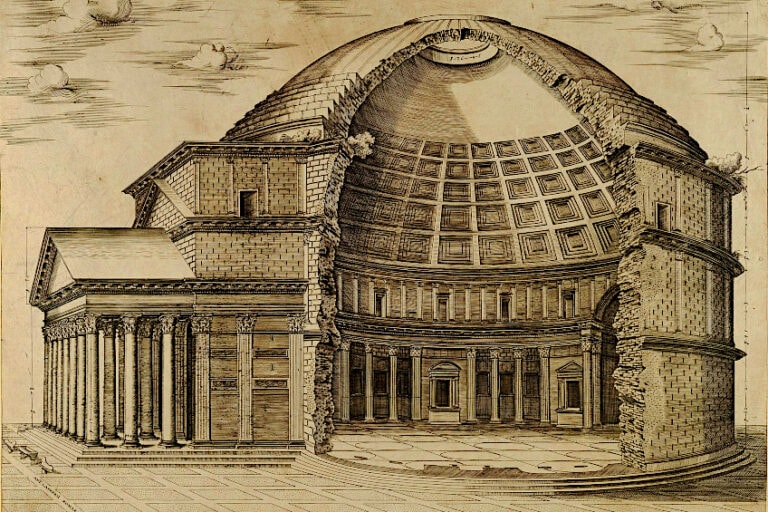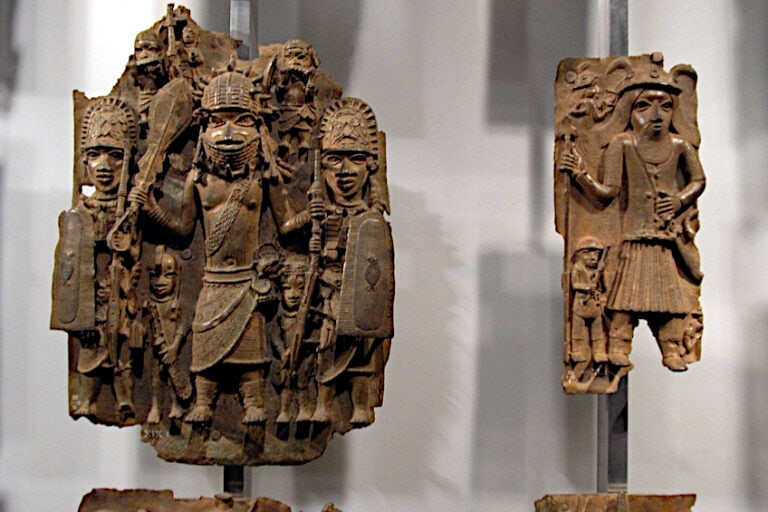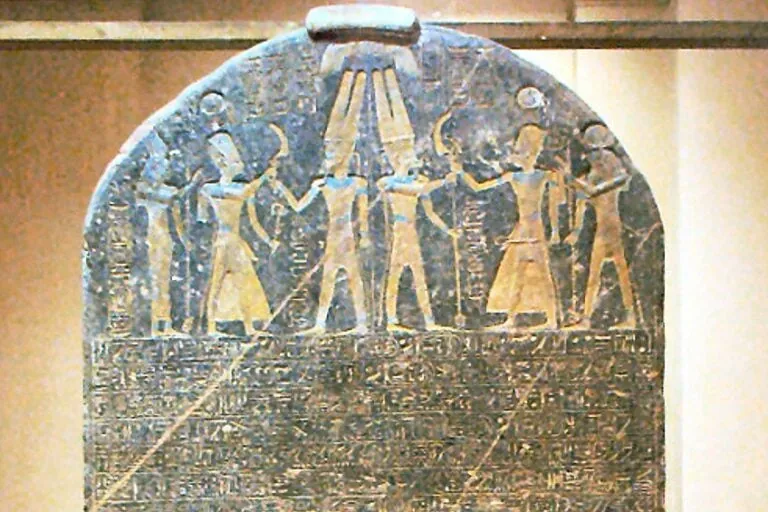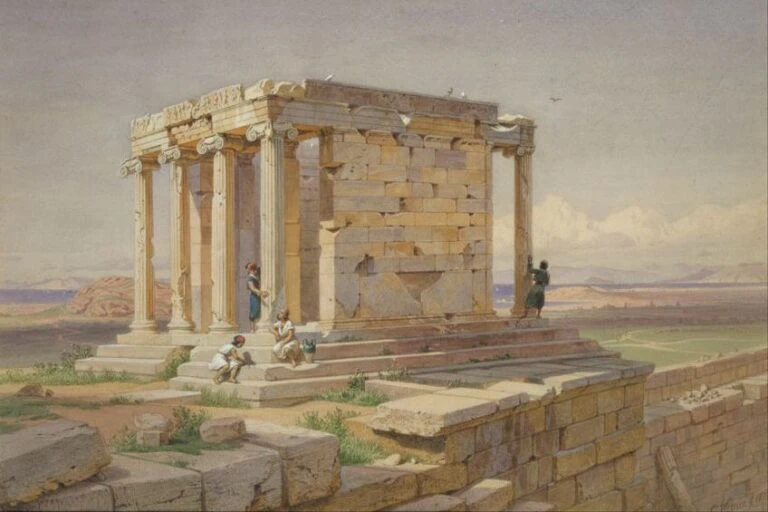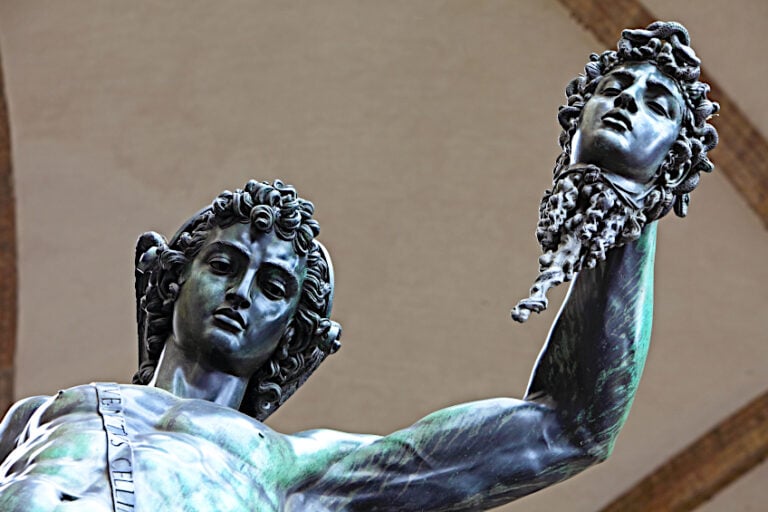Mask of Tutankhamun – The Funerary Mask of Tutankhamun
There are lots of ancient tombs that boggle the mind when discovered. These final resting places often contain unknown riches and treasures of a time long forgotten, and, of course, an untimely death for the previous ruler. If you were to ask anyone to name such a tomb on the spot, they would likely mention the tomb of the boy King, Tutankhamun. One of the items found in the boy king’s tomb is the famous golden mask that he was buried with. Let’s have a look at exactly what the mask is, what it is made of, what it represents, and why exactly he was buried with the mask.
Who Was Tutankhamun?
For a king that happens to be on the cover of many history books, there seem to be few individuals who know who he was, when he lived, or what exactly made him such a revered leader among the ancient Egyptians. Sure, if you randomly asked someone who he was they’d be able to tell you that he died pretty young and that he was really important, but why exactly was this? This being said, it’s a good idea to familiarise yourself with exactly who Tutankhamun was and why he was buried with such a lustrous treasure upon his death, the most notable of which was his iconic Egyptian mask.
Tutankhamun was the youngest king to ever rule Egypt, and as a result, he was showered with great awe and thought to be something of a god, if not God-adjacent.
 Funerary Mask of Tutankhamun (c. 1323 BCE); Mark Fischer, CC BY-SA 2.0, via Wikimedia Commons
Funerary Mask of Tutankhamun (c. 1323 BCE); Mark Fischer, CC BY-SA 2.0, via Wikimedia Commons
Not much else is known about exactly where the boy king came from. In fact, even who his mother and father were is a topic of intense debate among historians and Egyptologists alike. What we do know for sure is that the young king passed away when he was around 18 years old, according to his bone structure and the state of decomposition that his body was found in.
Items in his burial chamber also give us an idea of exactly how long his rule lasted (1334 – 1325 BCE), as there are a number of wine bottles scattered in and around the area that are marked with the years of his rule. From what can be deduced from Egyptian records, Tutankhamun inherited the Egyptian throne at the absolutely astonishing age of eight years old after his father passed away.
It is widely theorized that the then-king’s father was Akhenaten, also known as the heretic pharaoh.
Who would he be dubbed such a decidedly negative descriptor you ask? Well, Akhenaten chose not to worship or communicate with any of the ancient Egyptian gods, instead believing that the only one really worth anyone’s time and attention was the Aten. The Aten is a disk meant to represent the sun god. As you can imagine, for the Egyptian
people who had been worshiping the entire pantheon of gods for their entire lives, this did not go over well. Thankfully, when the young King Tutankhamun took the throne, he graciously restored the region’s religious beliefs to once again include the other gods and goddesses that his father had exiled from worship and acknowledgment.
Why Was the Boy King So Famous?
Well, although it is believed that he would have been as popular as any other king during his reign, the fact that he was so young would have made him somewhat of a novel ruler in his time. There are loads of statues and little figures of Tutankhamun that illustrate how popular he was, or at the very least, the lengths his house went to in order to promote his leadership and rule. However, these are not portraits, and therefore their representation of the boy king should at the very least be taken with a pinch of salt. What did the boy king look like then?
Well, even by analyzing his skeletal structure there is still so much room for error when determining what he looked like when he was alive, but there are a few things that we believe as more-or-less facts.
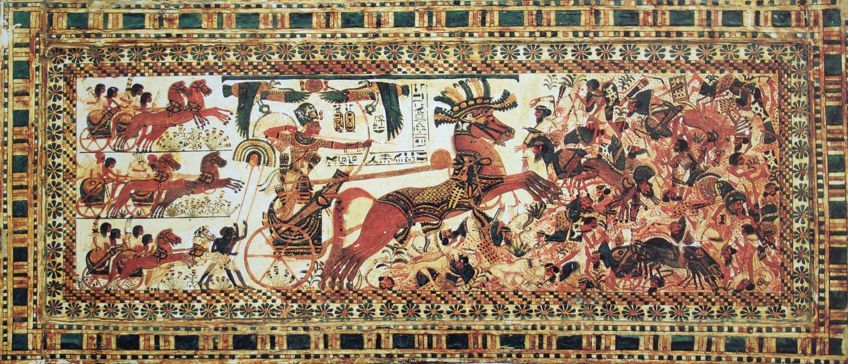 The Pharaoh Tutankhamun destroying his enemies (1327 BCE); From Le Musée absolu, Phaidon, 10-2012, Public domain, via Wikimedia Commons
The Pharaoh Tutankhamun destroying his enemies (1327 BCE); From Le Musée absolu, Phaidon, 10-2012, Public domain, via Wikimedia Commons
According to evidence, he had a clubfoot and a concave rib cage. Whether these were attributes he had throughout his life, ones that contributed to his death, or whether they were a result of his burial procedure cannot be verified. We do know that he was around 1.67 meters tall and that he would have been around medium build judging by his bone structure.
This doesn’t explain why exactly he is so well known in the archaeological community though. The truth behind the notoriety of the boy king’s tomb lies in the fact that he was buried with a virtually unparalleled amount of riches, in addition to the fact that both his tomb and his body were some of the best-preserved archaeological finds in modern history.
Never before were archaeologists and researchers granted such insight into the life and times of those who came before us.
This allowed them to paint a relatively complete picture of how the people of ancient Egypt lived, how they treated their leaders, what items they revered, how the burial and offering systems worked, and just how wealthy the boy king would have been.
The case of Tutankhamun is also a naturally alluring one. He is one of the few king’s in history to ever change his name, which was originally Tutankhaten due to his father’s devout worship of the sun god, Aten. After restoring the allowed worship of the entire Egyptian pantheon for his people, he embraced the god Amun himself, changing his name to Tutankhamun to reflect his faith.
The Mask of Tutankhamun
Now that you know a little bit about the boy king let’s have a look at the famous mask that he was discovered wearing. Many ancient cultures used masks for religious ceremonies, and the ancient Egyptians were no different. This being said, let’s have a look at what exactly this mask looks like, what its intended application was, and why it’s still an object of interest today.
| Location of Discovery | Archaeological site in the Valley of Kings, Egypt |
| Discovered By | Howard Carter |
| Date of Discovery | 1952 |
| Current Location | The Egyptian Museum, Cairo, Egypt |
| Material | Solid gold sheets hammered together |
| Weight (kg) | 10.23 |
| Dimensions (cm) | 54 x 39.3 x 49 |
 Discovering the Tutankhamun Tomb (1922); Harry Burton (1879-1940), Public domain, via Wikimedia Commons
Discovering the Tutankhamun Tomb (1922); Harry Burton (1879-1940), Public domain, via Wikimedia Commons
What Is the Mask of Tutankhamun?
The mask of Tutankhamun is a headdress mask consisting entirely of gold plating. The gold itself had not been purified as one would expect, especially considering that it was designed to be worn by royalty. Instead, the gold was left impurified to facilitate the cold metal stitching process that was used to create the mask and ultimately mate the plating together.
When looked at closely, there are slight differences in the color tone of the mask, and since gold paint was nearly impossible to come by when the mask was created, it was discovered that different gold alloys were used in the mask’s creation.
Different thicknesses were used as well, all in order to achieve the malleability needed to shape the mask in certain places.
As far as the representation goes, the mask is designed to present the ideal image of Tutankhamun as well as a visage of the Egyptian god Osiris. It actually matches some of the other depictions of the boy king found in and around the tomb, as well as in other parts of Egypt. However, how the king is “dressed” in this representation is a bit different from virtually any other depiction of him found to date.
The mask shows the boy king wearing a head cloth, known as a “nemes”, which was meant to represent his royalty. The head cloth is seen with representations of a cobra and vulture on it, symbols which are believed to indicate that he was the rightful ruler of both upper and lower Egypt. Strangely, the ears of the mask appear to have holes that are designed for piercings.
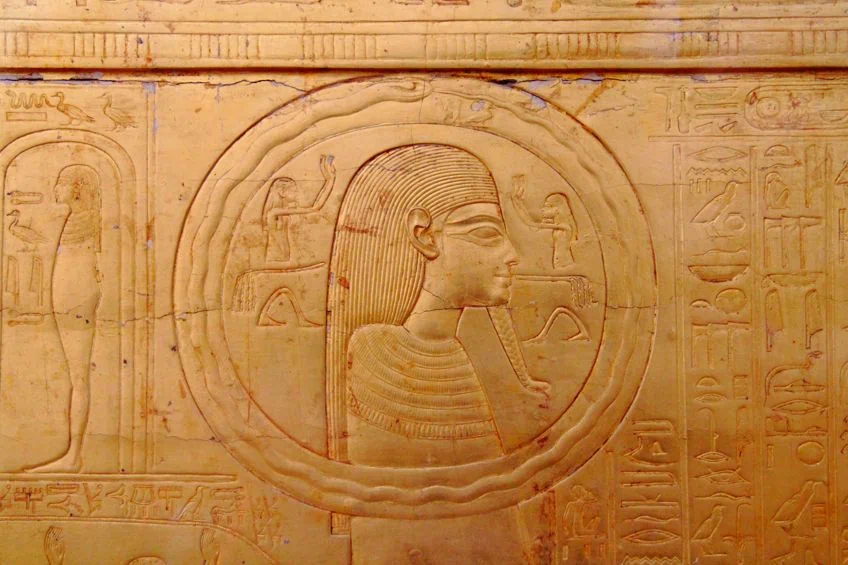 First known representation of the ouroboros on one of the shrines enclosing the sarcophagus of Tutankhamun (1334 – 1325 BCE); Djehouty, CC BY-SA 4.0, via Wikimedia Commons
First known representation of the ouroboros on one of the shrines enclosing the sarcophagus of Tutankhamun (1334 – 1325 BCE); Djehouty, CC BY-SA 4.0, via Wikimedia Commons
Why is this strange? Well, piercings were almost exclusively worn by women and children in ancient Egyptian culture. Even though there is no paint present on the mask, the creators still managed to achieve different colors by inlaying the workpiece with various precious stones and glass pieces that have been colored.
The Beard of Tutankhamun’s Mask
Various colors appear on the mask’s surface including turquoise and obsidian, especially near the eyes of the mask. The mask also has a beard of sorts, and even though it was not found attached to the mask when it was initially discovered, it was found broken off inside the sarcophagus.
The beard would later be reattached to the mask by way of a wooden dowel.
The story of the beard does not end here though. All the way back in 2014, the mask was taken out of its display casing for cleaning, but the wooden dowels gave out and the beard fell off. Museum staff then attempted to reattach said beard using a fast-drying epoxy, but it seems that it dried a bit too quickly and the beard set incorrectly.
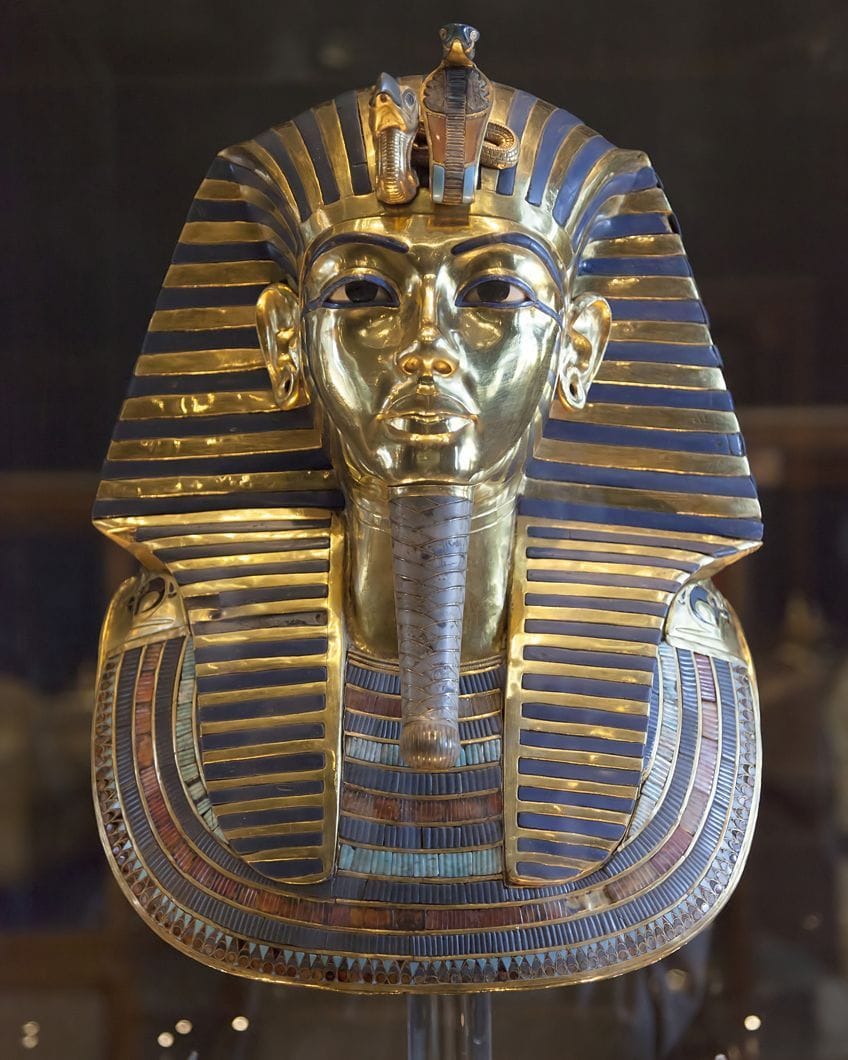 The Mask of Tutankhamun (c. 1323 BCE); Roland Unger, CC BY-SA 3.0, via Wikimedia Commons
The Mask of Tutankhamun (c. 1323 BCE); Roland Unger, CC BY-SA 3.0, via Wikimedia Commons
A year later the mask came into the possession of a German research team who noticed the damage to the mask. The beard was subsequently removed, cleaned of all epoxy, and reattached to the mask by using beeswax. Why beeswax you ask? Well, this was a natural adhesive used by the ancient Egyptians and is a viable alternative to epoxy when used on certain materials (including gold!) As you can probably imagine, the fact that the beard was reattached so haphazardly did not go without consequences.
The team that perpetrated the act, as well as the museum director, were all fined and disciplined for trying to hide the fact that the beard had been attached in an unscientific and inaccurate manner.
The Incantation of Tutankhamun’s Mask
It doesn’t take a keen eye to see that there are quite a bit of hieroglyphics on the mask of the boy king. These pictographs are one of the many things that have become an iconic part of the public’s perception of ancient Egypt. These hieroglyphs, however, are very different from the ones that one would find on pyramid walls or on ancient parchments found in and around the region.
They are an incantation of ancient origin, and while they might be unique to the funerary mask of Tutankhamun, they have actually been used on the funerary masks of past kings for around 500 years. The incantation essentially ensures that the wearer of the mask will be protected in the afterlife, granting protection over all four limbs, and of course, the head.
The hieroglyphs are present on the back and the shoulders of the mask and drape all the way down the middle of the wearer’s back. They have been expertly etched into the golden surface, which likely took a considerable amount of time to do. Such effort and painstaking effort would have only been reserved for items crafted for people of great importance in these times.
Translation of the Incantation
What exactly do the hieroglyphs say? Well, a direct translation and operative meaning can be interpreted as follows: “Your right eye is the night boat, your left eye is the day boat, your eyebrows are the Ennead. The crown of your head is Anubis, the back of your head is Horus, your fingers are Thoth, your lock of hair is Ptah-Sokar. You are in front of, he sees by means of you.”.
Strangely, the incantation seems to refer to both the wearer of the mask and the mask itself. This is not uncommon, especially considering that ancient languages and dialects can sometimes lose their context, cadence, and delivery when translated directly into English. This being said, the incantation is quite special and has been studied by scholars for many years.
 The Back of Tutankhamun’s Mask (c. 1323 BCE); Tarekheikal, CC BY-SA 4.0, via Wikimedia Commons
The Back of Tutankhamun’s Mask (c. 1323 BCE); Tarekheikal, CC BY-SA 4.0, via Wikimedia Commons
This spell originally appeared in the book of the dead. Symbolic meanings of each “verse” have been uncovered either. The right eye represents the sun god, the eyebrows represent the pantheon, the forehead represents Anubis, the nape of the neck represents Horus, the hair represents Ptah-Sokar, and the facial features as a whole represent Osiris. The mask, as you could probably tell by the wording in the spell, is meant to allow Tutankhamun to travel to the afterlife with the protection of the various gods mentioned in it.
Every body part and facial feature was specifically chosen to ensure his safe travels, a practice that was fairly common for important public figures in ancient Egypt.
Was Everything Inside the Tomb Designed for Tutankhamun?
While the funerary mask of Tutankhamun was custom-made for the boy king’s burial, not everything found in the tomb was made from scratch for the occasion. This makes sense considering that gold was (and still is) a precious commodity, and since other pharaohs had already had their “send-off” so to say, certain items were repurposed.
There are even arguments that the mask itself might have been altered to accommodate the burial of the boy king.
This would explain some of the mask’s features, as we mentioned previously the mask had holes in its ears believed to be intended for earrings, which could indicate that it was originally intended for a female pharaoh. There are other indications that the mask, or at least the materials used to make it, were repurposed for its creation. Previously we mentioned that different alloys and compositions of gold were used in the creation of the headpiece, even though this was originally believed to be in the interest of the malleability of more challenging sections of the mask.
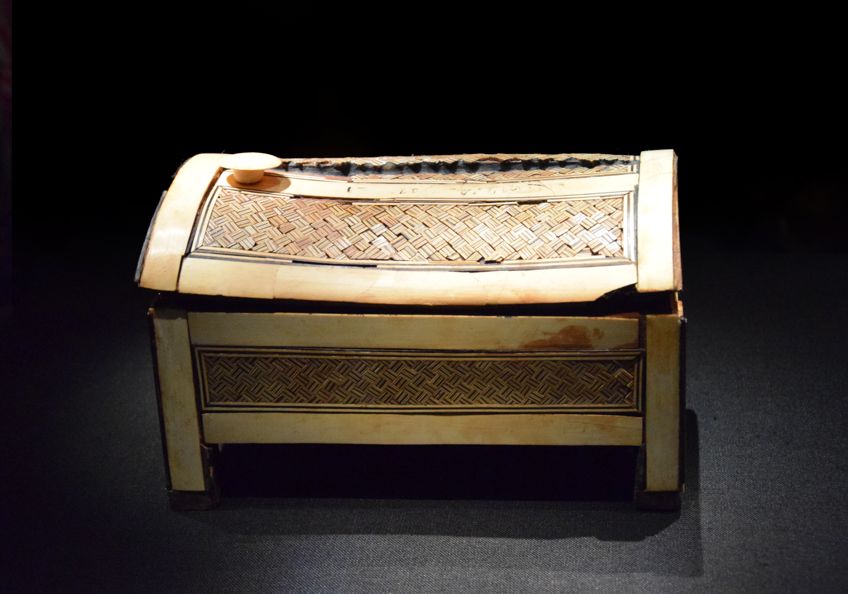 Tutankhamun Treasure in Paris coffret (c. 1323 BCE); Chatsam, CC BY-SA 3.0, via Wikimedia Commons
Tutankhamun Treasure in Paris coffret (c. 1323 BCE); Chatsam, CC BY-SA 3.0, via Wikimedia Commons
The leading theory points to the areas surrounding the face being from the lady pharaoh Neferneferuaten, while the actual facial features were custom-made and superimposed onto the existing mask. However, this is just a theory, and there is evidence from metallurgy experts that support the mask being completely custom-made for the boy king.
What Does the Mask of Tutankhamun Mean to the Archaeological Community?
There are a lot of reasons why this mask is considered to be so important by the people of the archaeological community. The primary reason that the find is so revered, even decades after its discovery, is the nearly perfectly preserved state that the mask was found in, and the sheer number of things that were found inside the tomb. Tutankhamun’s tomb was hidden for a long time before it was initially discovered (entirely by accident mind you), and as a result, it remained largely untouched, especially the primary burial chamber.
When the tomb was eventually excavated, the burial seal, the tomb, the king’s internal organs, as well as all of his riches were simply there for study.
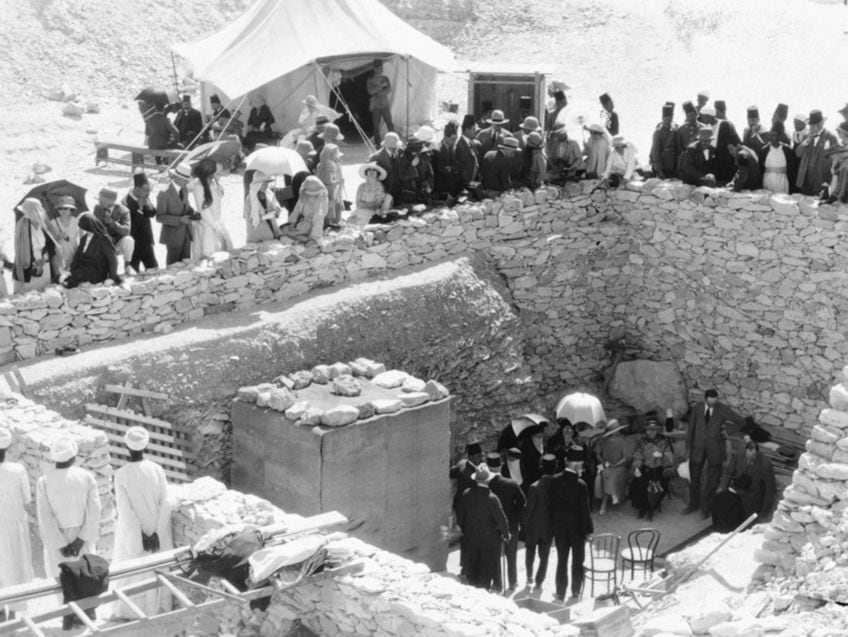 Tourists outside Tutankhamun’s tomb (1923); Maynard Owen Williams, Public domain, via Wikimedia Commons
Tourists outside Tutankhamun’s tomb (1923); Maynard Owen Williams, Public domain, via Wikimedia Commons
This is the literal and figurative equivalent of hitting the archaeological jackpot. The artifacts found in the tomb as well as the body of the boy king himself provided extensive insight into Egyptian burial rituals, as well as the skill and resources the ancient Egyptian people had available to them at the time the king was buried.
Now that you know who Tutankhamun was, why the mask of the boy king is so important, what the mask meant at the time of burial, and what the inscription on the mask means, it’s time for you to get out there and put your newfound knowledge to the test. If you would like to see the mask for yourself, it is on (almost) permanent display in the Egyptian Museum in Cairo, Egypt!
Frequently Asked Questions
Is the Mask of Tutankhamun a Death Mask?
Yes, the mask found inside the tomb of the boy king is, in fact, a death mask. Masks like these were buried with kings of Egypt to ensure their safe travels into the afterlife. The mask has an inscription on the back of the headdress evoking various deities to protect the wearer when they cross over.
Is the Mask of Tutankhamun Solid Gold?
This depends on your definition of the word solid. The mask was not forged from liquid gold, rather, it consists of two solid golden sheets that have been hammered together using cold metal bonding techniques. This being said, it is not solid in the conventional sense.
How Much Is Tut’s Mask Worth?
This depends on the context in which it’s being valued. In terms of the gold it consists of, it would only be worth around 2, 000 000 US dollars. However, this excludes the historic and cultural value, and the fact that bidding would only start at $2, 000 000.

I am deeply passionate about history and am constantly fascinated by the rich and complex stories of the past. As the editor-in-chief of learning-history.com, I have the opportunity to share this passion with a wide audience through the creation and distribution of engaging and informative content about historical events, persons, and cultures. Whether it’s through writing articles and blog posts or creating videos or podcasts, I strive to bring the past to life in a way that is both accurate and enjoyable. My expertise in history, combined with my strong writing and communication skills, allows me to effectively communicate complex historical concepts and make them accessible and interesting to a wide range of readers. I am truly grateful for the opportunity to share my love of history with others through my work on learning-history.com.

